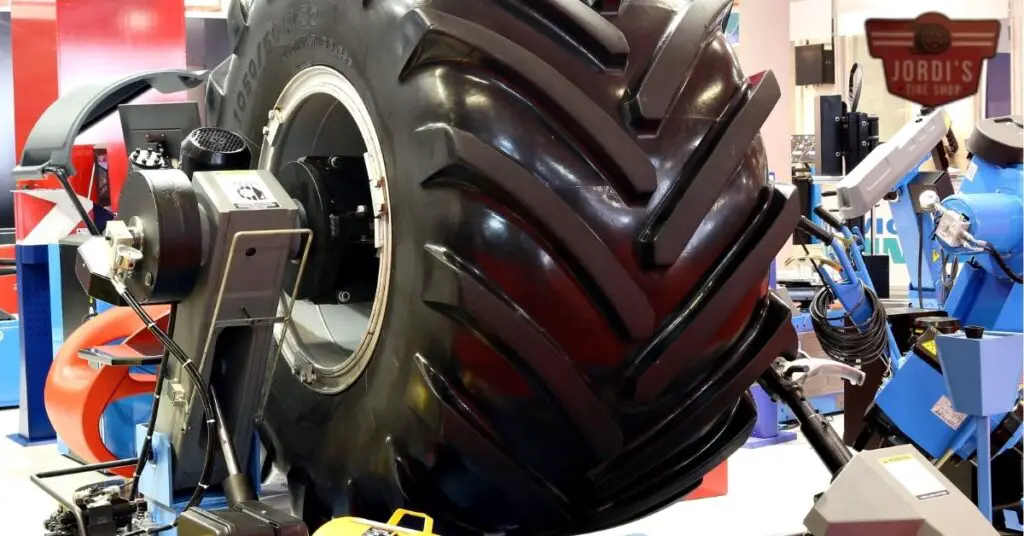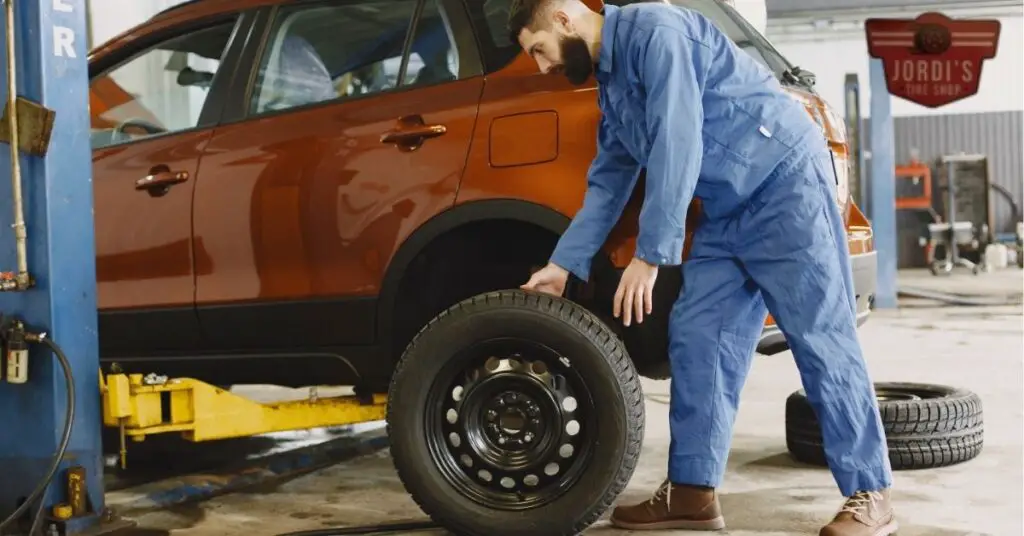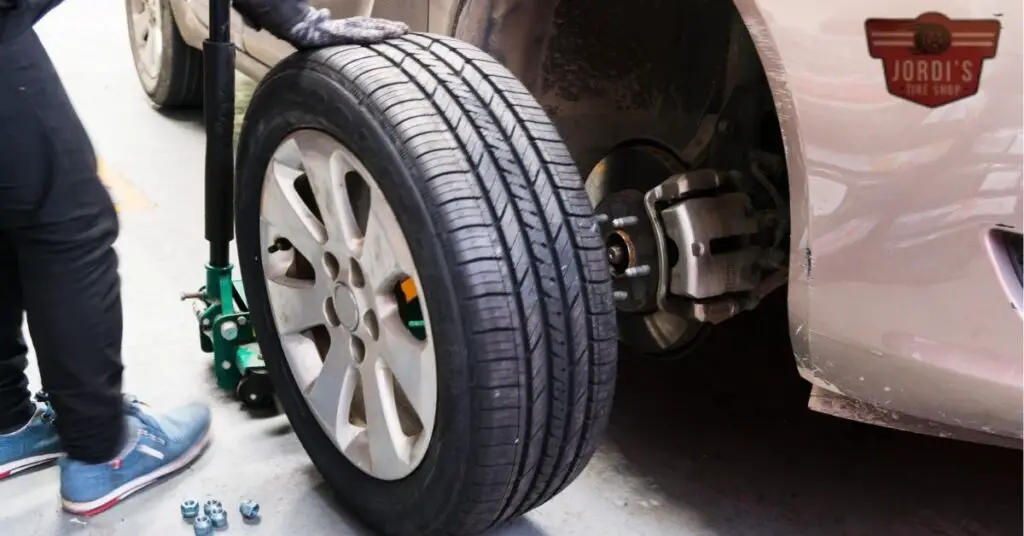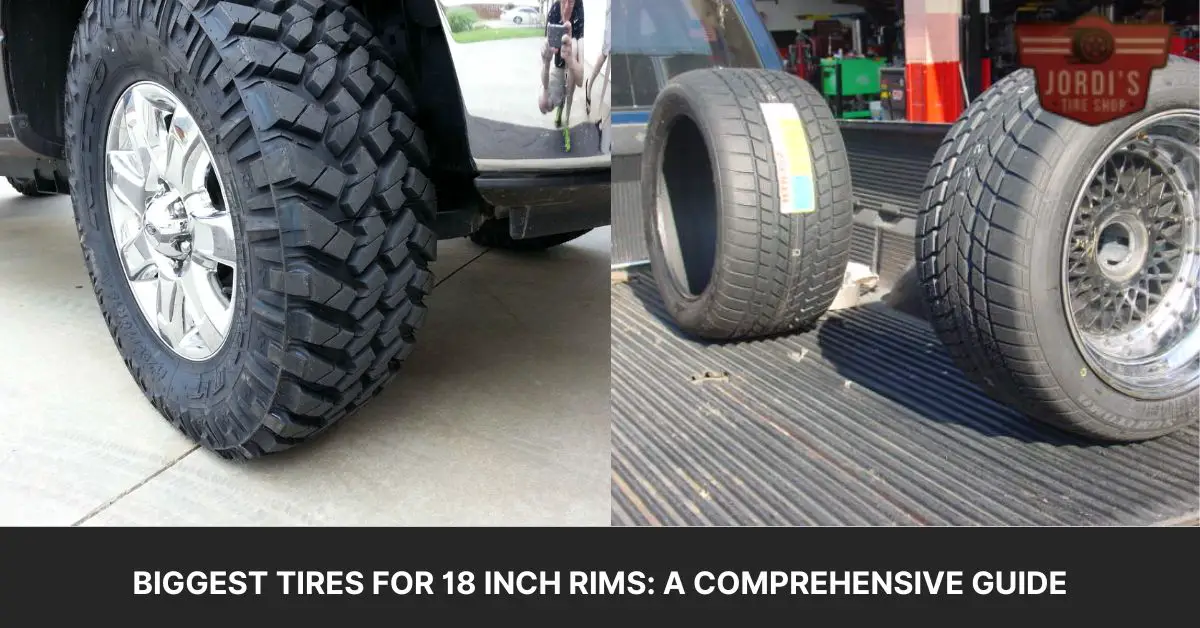When we think about customizing our vehicles, one of the first things that come to mind is swapping out the tires. It’s not just about the aesthetics; it’s also about performance, handling, and sometimes even fuel efficiency. For those of us with 18-inch rims, finding the biggest tires that fit without compromising the vehicle’s integrity can be a thrilling challenge.
Understanding Tire Sizes

Understanding tire sizes is crucial when searching for the largest tires that can fit on 18-inch rims without compromising a vehicle’s integrity. Tire size is represented by a series of numbers and letters that denote specific dimensions of the tire. This coding provides information about the tire’s width, aspect ratio, construction type, and diameter.
The first number in a tire size represents the tire’s width in millimeters. For instance, a tire marked as 225 indicates that the tire is 225mm wide. The aspect ratio follows, denoted as a percentage, which measures the height of the tire’s sidewall as a percentage of its width. For example, a tire with an aspect ratio of 55 means the sidewall’s height is 55% of its width.
Next, the construction type of the tire is indicated by a letter. The most common types are “R” for radial construction, which the majority of modern tires use, and “D” for diagonal construction. After the construction type, the diameter of the wheel that the tire is designed to fit is listed in inches. For 18-inch rims, this number will be 18.
Choosing the biggest tires for 18-inch rims involves selecting a tire with the maximum width and aspect ratio that can fit the vehicle and rim without causing issues. It’s essential to ensure that the tire’s overall diameter and width doesn’t interfere with the vehicle’s fenders, suspension, or bodywork. Adjustments or modifications might be necessary if a tire size exceeds the manufacturer’s specifications.
Let’s look at how we can determine compatibility and make the right choice for enhancing performance and appearance with the largest tires suitable for 18-inch rims.
Factors to Consider Before Buying the Biggest Tires

Having explored the complexity of choosing the biggest tires for 18-inch rims and the necessity of ensuring vehicle compatibility, it’s crucial to touch upon several factors one must consider before making a purchase. These considerations help in refining the selection to fit not only the rim but also the vehicle’s overall performance and appearance.
Vehicle Manufacturer’s Recommendations
Following the vehicle manufacturer’s guidelines is paramount. These recommendations are designed to ensure the vehicle maintains optimal performance and safety standards. Ignoring these may lead to reduced fuel efficiency, compromised handling, and increased wear on vehicle components.
Tire Specifications
Understanding the tire specifications is essential. The width, aspect ratio, and construction type influence how a tire performs under different conditions. For instance, wider tires may offer better traction but can also affect fuel economy and handling. Ensuring the chosen tires match your driving needs and preferences is key.
Clearance
Ensuring there is adequate clearance between the tire and the vehicle’s body is critical. Tires that are too large can rub against the fenders, suspension, or bodywork, causing damage over time. It’s important to measure the available space and consider any potential modifications required to accommodate larger tires.
Speedometer Calibration
Larger tires can affect the accuracy of the vehicle’s speedometer and odometer since these are calibrated based on the original tire dimensions. Installing larger tires without recalibrating these instruments can lead to inaccurate speed and distance readings, which is crucial to correct to avoid speeding violations and ensure accurate mileage tracking.
Overall Impact on the Vehicle
It’s essential to consider how larger tires will impact the vehicle’s dynamics. This includes changes in handling, fuel economy, and wear on suspension components. Consulting with a professional can provide insights into how different tire sizes can affect these aspects of your vehicle.
In short, choosing the biggest tires for 18-inch rims involves balancing desires for aesthetics and performance with practical considerations like compatibility, safety, and vehicle integrity. Carefully weighing these factors, one can make an informed decision that enhances their vehicle’s appearance and performance without compromising its safety or functionality.
Top Picks for the Biggest Tires for 18 Inch Rims
After considering the essential factors like the manufacturer’s recommendations, tire specifications, clearance, speedometer calibration, and impact assessment on the vehicle, we’ve curated a list of our top picks for the biggest tires suitable for 18-inch rims. These selections aim to strike a perfect balance between enhancing aesthetics and ensuring optimal performance without compromising the vehicle’s safety or functionality.
- Goodyear Wrangler Duratrac – Offering a rugged appeal and outstanding off-road performance, these tires provide excellent traction in mud, snow, and rock. Their durability makes them a top choice for drivers seeking adventure without sacrificing comfort on the road.
- Michelin Pilot Sport 4S – Ideal for sports car enthusiasts, these tires excel in wet and dry conditions, ensuring high performance. The Pilot Sport 4S combines responsiveness, control, and longevity, making it a great option for spirited driving.
- BFGoodrich All-Terrain T/A KO2 – Known for its reliability in all conditions, this tire is a go-to for off-road enthusiasts and everyday drivers alike. Its robust design offers longevity and traction in diverse terrains, from highways to dirt trails.
- Continental TerrainContact A/T – This all-terrain tire is perfect for drivers looking for versatility. It offers a quiet, comfortable ride on the road while providing the durability and grip needed for light off-road adventures.
- Pirelli Scorpion Verde All Season Plus II – Designed for SUVs and crossovers, these tires prioritize fuel efficiency, low road noise, and all-season performance. They’re excellent for drivers seeking a blend of environmental consciousness and practicality.
Each of these tires has its unique strengths, catering to different driving experiences and requirements. Whether you’re aiming for off-road durability, high-speed handling, or all-season versatility, there’s an option that aligns with your needs and complements your vehicle’s performance when mounted on 18-inch rims. As always, ensuring proper fitment and compatibility with your vehicle’s specifications is crucial to maintaining safety and enhancing overall experience.
Installation and Maintenance Tips

After selecting the perfect tires from our top picks, like the Goodyear Wrangler Duratrac or Michelin Pilot Sport 4S, for your 18-inch rims, it’s crucial to focus on proper installation and maintenance to ensure longevity and peak performance. Here, we’ll share essential tips to keep those new tires in top shape.
Installing Your Tires
Understanding the right way to install your tires can enhance their lifespan and ensure your safety on the road.
- Professional Installation: We always recommend having your tires installed by professionals. They have the expertise and equipment to ensure the tires are mounted correctly on your 18-inch rims and balanced to prevent any vibrations or uneven wear.
- Check Tire Pressure: Upon installation, check the tire pressure to match your vehicle’s recommendation, which you’ll find in the owner’s manual or on the driver’s side door jamb. Incorrect tire pressure can lead to poor performance, increased wear, and even blowouts.
- Alignment Check: After installing new tires, get a wheel alignment to ensure the tires wear evenly and maintain proper contact with the road. This step is crucial for preventing premature wear and extending the life of your tires.
Maintaining Your Tires
Regular maintenance is key to maximizing the performance and lifespan of your new tires.
- Regular Inspections: Frequently inspect your tires for any signs of wear, damage, or foreign objects lodged in the tread. Catching issues early can prevent more serious problems later.
- Rotate Your Tires: Rotate your tires according to the manufacturer’s recommendation, typically every 5,000 to 8,000 miles. This promotes even wear across all tires, improving their longevity and performance.
- Maintain Proper Inflation: Check your tire pressure monthly, including the spare. Adjust the pressure as needed, especially with changing seasons, as temperature fluctuations can affect tire pressure.
Following these installation and maintenance tips, you’ll ensure your tires for 18-inch rims, whether they’re designed for off-road performance, sports cars, or versatility, deliver the best driving experience. Remember, investing a little time in care and maintenance can prolong the life of your tires significantly, offering better safety and performance on the road.
Pros and Cons of Having Big Tires on 18 Inch Rims

After identifying how to ensure your large tires last through proper installation and maintenance, let’s explore the benefits and drawbacks of equipping your vehicle with these sizeable upgrades. Opting for the biggest tires that fit 18-inch rims can significantly alter your driving experience in various ways.
Pros
- Improved Traction and Stability: Bigger tires have a larger contact area with the road, enhancing traction. This improvement is particularly noticeable in off-road conditions or unfavorable weather, offering a smoother and more stable ride.
- Enhanced Aesthetics: There’s no denying that larger tires on 18-inch rims give vehicles a more robust and aggressive look. Many car enthusiasts prefer this appearance for its visual impact and the statement it makes on the road.
- Better Off-Road Performance: If off-roading is part of your driving repertoire, bigger tires are indispensable. They provide better clearance, allowing you to navigate through rough terrain, mud, sand, and obstacles more easily.
Cons
- Increased Fuel Consumption: The larger the tire, the more effort your car must exert to move, directly impacting fuel efficiency. This decrease in miles per gallon is a common trade-off for the performance and aesthetic benefits.
- Possible Speedometer Discrepancy: Installing tires larger than your vehicle’s recommended size can lead to inaccuracies in your speedometer readings. Although not a significant issue for all, it’s something drivers should be aware of, especially if precision is a priority.
- Altered Handling: While traction may improve, bigger tires can also change the vehicle’s handling characteristics. Some drivers might notice a decrease in responsiveness and an increase in steering effort, particularly at lower speeds.
Choosing the biggest tires for your 18-inch rims comes with a blend of benefits and compromises. Whether it’s for an enhanced appearance, improved performance, or tackling challenging terrains, understanding these pros and cons ensures you make an informed decision that aligns with your driving needs and preferences.
Conclusion
Choosing the right tires for your 18-inch rims is a journey that’s both exciting and crucial. We’ve walked through the essentials, from the importance of matching specifications to weighing the pros and cons. It’s clear that while bigger tires can elevate your vehicle’s performance and aesthetics, they also come with considerations like fuel efficiency and handling changes. Armed with this knowledge, we’re confident you can make a choice that suits your driving style and needs perfectly. Let’s hit the road with confidence, knowing we’ve made an informed decision that balances our love for style with our need for practicality.
Related Posts:
- 2021 Mitsubishi Outlander Sport Towing Capacity: A Friendly Guide
- A Guide to the “A in a Circle” Symbol on Your Car
- Big O Tire Installation Fee: What You Need to Know
- Biggest Tires for 18 Inch Rims: A Comprehensive Guide
- Mechanic for European Cars: Expertise and Affordable Services
- Radio Keeps Changing Stations By Itself: How to Fix It
- Semi Truck Tire Position Diagram: A Helpful Guide for Drivers
- Mitsubishi Staten Island: Your Ultimate Guide to Finding the Best Dealership
- Ford 3.3 V6 Problems: Common Issues and Solutions
- 5.3 Lifter Replacement Made Easy Without Removing Head

